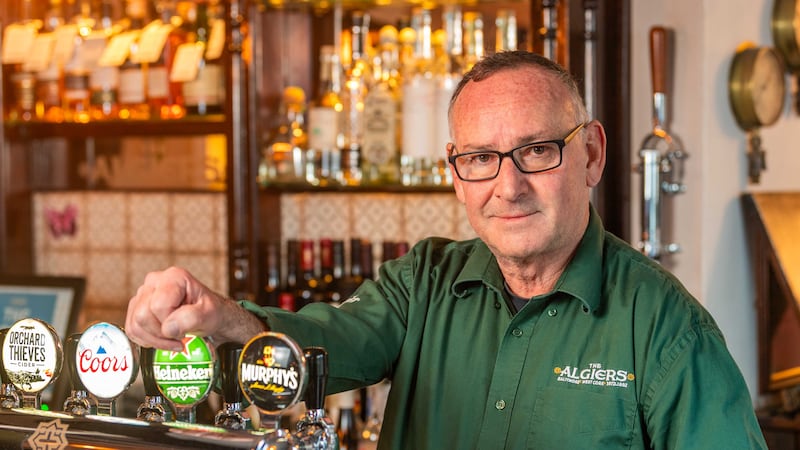For the guts of a week in Kerry in April 2021, Killarney National Park was on fire. Some 2,500-3,000 acres were ravaged. And yet outside the county, somehow, this was not being spoken about as the national disaster it was. During the most recent heatwave, an outcome of the climate crisis and human-made contribution to global heating, Ireland got away without the country going up in flames. For now. But this won’t always be the case. We are facing into a future of much more frequent and larger wildfires and forest fires. We need to act now before the flames are lapping at our houses and farms. While this terrible situation can feel bleak or fatalistically inevitable, it does not need to be the case. The solutions are obvious.
In September, the Citizens’ Assembly on Biodiversity Loss will kick up a gear. This provides an excellent opportunity for a practical, informed national conversation on the future of our land. There are plenty of reasons for widespread broadleaf tree planting — as well as protecting and expanding the pockets of broadleaf forests we already have, many in rag order — but an immediate and practical one rooted in basic safety is how they contribute to mitigating large-scale wildfires.
Conifers go up in flames. They burn faster and with more intensity. Their sap is fuel for fire spread
Unfortunately for Ireland, the State’s pathological drive to prioritise planting Sitka spruce trees puts us on the back foot. Ending Sitka planting and replacing monoculture plantations with broadleaf native forest has many benefits regarding the integrity of the landscape, creating a functioning forest ecosystem, improving the forest floor and soil nutrition, and fostering wildlife and plant life. And yes, tourism and recreation too.
[ Una Mullally: We are losing teachers who cannot afford to live hereOpens in new window ]
[ Una Mullally: Fine Gael is completely disconnected and does not even realise itOpens in new window ]
[ Una Mullally: Politicians should reform libel laws instead of using themOpens in new window ]
But that’s not all. Spruce trees and conifers play a particular role in wildfires. There’s a natural reason they originate in colder climates where wildfires are less common (although that’s something we can no longer take for granted), and that’s because conifers go up in flames. They burn faster and with more intensity. Their sap is fuel for fire spread. As Ireland heats up, in order to protect public health and homes, we need to rid the island of Sitka, and focus on enriching rather than stripping the land. Broadleaf forests, while not immune to fire, offer a different kind of defence. Deciduous trees don’t burn as quickly or as easily, and they store more carbon. More broadleaf forests means fewer and smaller forest fires.
READ MORE
Back to life
Ireland does not have a cold climate. We have a temperate climate. We assume that our barren mountainsides were ever thus, but that’s not the case. You sometimes get a glimpse of what things once looked like on tree-filled lake islands devoid of grazing animals. One of the most inspiring places in Ireland is the Beara peninsula bridging Cork and Kerry — surely one of the most beautiful, magical places on our island. Steeped in ancient history, with early Bronze Age settlements, the place is teeming with megalithic monuments — stone circles, dolmens, standing stones and tombs — along with medieval ring forts. And on that peninsula, there is a wonder: a temperate rainforest. This is the kind of thing that we should make widespread across the island once again. We need temperate rainforests for our temperate climate.
The Beara rainforest offers an glimpse of what could be. Under the stewardship of Eoghan Daltun, a self-taught ecologist, the land has come to life. Lichen, fungi, bryophytes, incredible birdlife, all combine to create a beautiful, verdant, diverse ecosystem. It is stunning. One walks away from this setting thrilled, but also frustrated that this remarkable example of biodiversity isn’t the norm.
Travelling through the Irish landscape, it often seems as though some drunk deity has been cutting pictures of trees out of a Canadian or Alaskan brochure and collaging them on top of Irish hills
Right now, forests in public ownership (mostly Coillte) are 71.2 per cent conifer, and 28.7 broadleaf. It doesn’t take an arborist to understand this ratio is the wrong way around. Planting Sitka crop masquerading as forestry, and razing the land constantly, is destructive and regressive. For those in private Sitka-growing who are making money from the Irish landscape, we will need to find new ways, immediately, for people to transition from Sitka farming. How can it be that the country’s “forests” contain 51.1 per cent Sitka but just 2.7 per cent pedunculate and sessile oak?
The time has passed for “phasing out” or “increasing targets” or “working towards” things we need to do now. We need to embark upon a radical and vast broadleaf afforestation plan, protect existing real forests much better, replace Sitka, and end the unfenced wandering of grazing animals destroying things before they can grow. Simultaneously, we need a dramatically stepped-up approach to ridding the island of rhododendron. Rhododendron — which Killarney National Park is devastatingly invested with — not only destroys so much in its creeping path, but when it’s dead (and it’s killed through herbicide injection) and not cleared properly, it provides ample fuel for fires to spread with intensity. Rewetting bogs has been a fantastic step towards an end to land exploitation. But the Sitka has to go. Travelling through the Irish landscape, it often seems as though some drunk deity has been cutting pictures of trees out of a Canadian or Alaskan brochure and collaging them on top of Irish hills. We know this stuff isn’t right. Increasing, protecting and facilitating temperate Irish rainforests should be central to our approach to biodiversity. The results would be wonderful.















